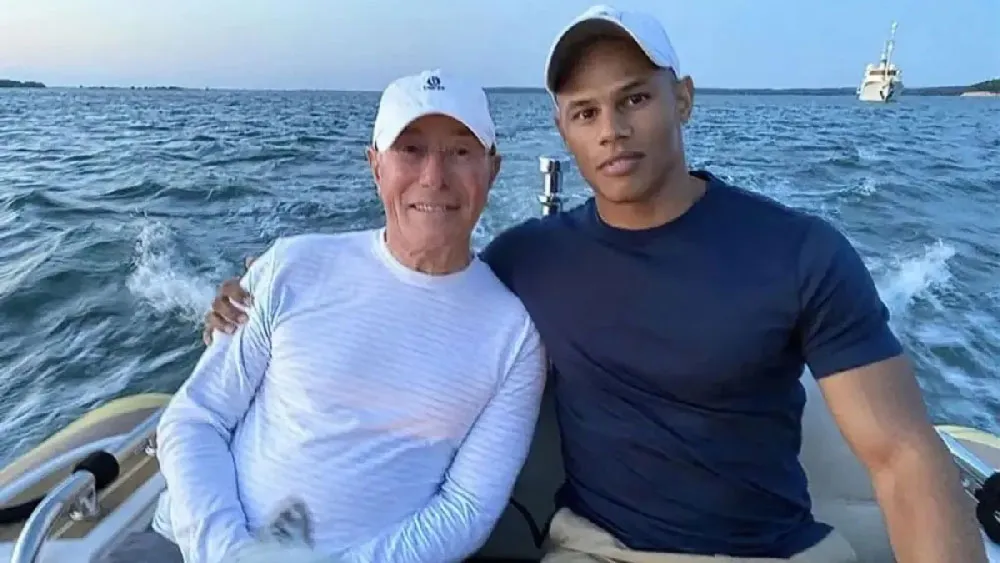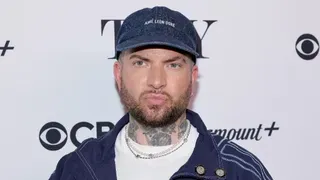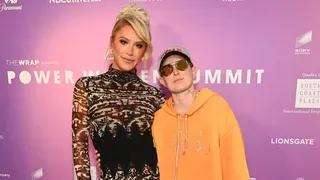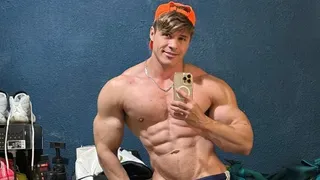October 22, 2012
Lesléa Newman mourns Matthew Shepard, with the moon and the stars
Scott Stiffler READ TIME: 6 MIN.
"It was a terrible coincidence," says Lesl�a Newman of the events whose ripple effects, 14 years later, are still shaping her creative life and commitment to social justice. "But it feels like I was given a responsibility by the happenstance that I was there."
The "there" she speaks of is Laramie, Wyoming. The "when," October of 1998. The "what" is the murder of Matthew Shepard, a 21-year-old gay college student who met two men -- Aaron McKinney and Russell Henderson - at a local bar on October 7. They offered to give him a ride home, but instead took him to a remote locale out of town where they tied him to a fence and beat him savagely. Shepard was found there unconscious by a jogger some 18 hours later who mistook him for a scarecrow. The beating left him in a coma and he was put on life support. He died five days after the beating.
The outcry against the Shepard's beating and death brought the issue of anti-gay violence to the forefront of the media. Henderson and McKinney were arrested, tried and convicted of the murder; both received two consecutive life terms without the possibility of parole.
Intangible
Although the media attention given Shepard's murder would change the way a largely uninformed and uninvolved mainstream America viewed anti-gay violence, the "why" of the event was-and still is-so intangible that the author's literary exploration couldn't be done with the dense, sprawling word count that the prose form allows.
"Poetry is my first love," says Newman. "So whenever I write something that profoundly touches my heart, I turn to poetry. But the other reason is, I had to really use my imagination to hear the voices of the silent witnesses to the crime."
Told through a series of poetic monologues, the recently released "October Mourning: A Song for Matthew Shepard" (Candlewick Press) gives speculative voice not only to the townspeople and the murderers, but also to the wind, the stars "and the deer that kept him company"-and, of course, that fence.
"I started with the fence," recalls Newman of how the concept took shape, "because the fence has become such an iconic symbol. Then I moved to other components of nature. The book is pretty much in chronological order of events, but in that, there are many fictitious people. There's a poem called "A Father," "A Mother, "The Church Lady."
Part II, she notes, "ends with [Aaron] McKinney going off to his life sentence, and then the fence being taken down-which happened years after the fact. Then, there's an epilogue, about a pilgrimage I took to Laramie to pay my respects."
It was her third time at the fence-the second being in 2009 "when I thought I finished the book," and once in 2010. Of that last visit, she says, "I felt like I didn't want to end [the book] in a devastated place. I felt I needed to go back to Laramie for the last poem. What I wanted to do was pay Kaddish, a Jewish prayer-and to leave, in the tradition, a stone to show that a part of us has not been forgotten. And I wanted to stand there and look out so I could see the last thing he saw. When I did all that, I realized the book had to end with a prayer."
Removing a symbol
By that point, the landowner had removed the powerful symbol. "There's another fence there," she notes, "Same kind. The land was sold [since the murder] and the person who bought it wasn't crazy about people coming...so he took it down." There is another fence, Newman says, about 50 yards away, "and people still come to it all the time."
As for the first time she visited the fence, it was during her trip to Laramie in 1998. Newman was booked as the University of Wyoming's keynote speaker for Gay Awareness Week.
The presentation she was set to give was one she'd been traveling with for quite some time. It incorporated her own coming out and discussed the notoriety (and controversy) that had followed her ever since the 1989 publication of her children's book, "Heather Has Two Mommies."
Newman got a call from the event organizer when the Shepard incident was not yet a murder. "Jim Osborn called me [as I was preparing to leave] and told me what had happened." When Osborne opened the door for Newman to bow out, her immediate, instinctual response was, she recalls, "No, I need to come more than ever." By the time she arrived in Laramie, Shepard's assault had become a murder.
"I gave the speech I had planned on giving," she says. "I felt like it was important, that it would have been a terrible message on my part to not go. As an out lesbian, I could show the students that it is possible to have a productive and happy life."
As she gave the presentation, Newman noticed several of the student event organizers in the front row. "I can still see their faces," she says. "They were just so full of appreciation. I kept thinking, 'Matthew Shepard should be sitting in that seat.' I knew he was a member of the LGBT Association, and one of the last things he did was go to a meeting of that group-and the meeting was about putting the finishing touches on Awareness Week."
Since that night, every speech Newman has given on the topic of gay rights has been dedicated, publicly, to Matthew Shepard.
Now, with "October Mourning," she hopes that young audiences will "feel inspired to be active, in whatever way they feel comfortable."
Asked for her assessment of the current state of intolerance, Newman cites "the way the word 'fag' is used so casually, or 'That's so gay.' From the supposedly harmless name calling to everything in between...it has to be stopped."
Based on recent visits to high schools, Newman cites as encouraging the positive reactions that students have upon hearing poems from "Mourning."
"They have a really strong response," she says, speculating that Matthew Shepard touches a nerve "maybe because he looks more like a high school kid than a college student. They really relate to him. I've had kids stand up and say, 'I used to call people fag, but I won't do that anymore.'"
Through the sparse medium of poetry (uniquely effective in creating emotional resonance), Newman's examination of the incident and its aftermath seeks to change hearts and minds by challenging us to "imagine. I can't imagine what his parents went through. But we all have to imagine. That's the only way we'll be motivated to do something. Every Jew is charged with a mission: repair that world. Every human being should take that mission, in whatever way they can."
To find out more about Lesl�a Newman, how to buy "October Mourning: A Song for Matthew Shepard" and to learn of upcoming appearances, visit her website.
Scott Stiffler is a New York City based writer and comedian who has performed stand-up, improv, and sketch comedy. His show, "Sammy's at The Palace. . .at Don't Tell Mama"---a spoof of Liza Minnelli's 2008 NYC performance at The Palace Theatre, recently had a NYC run. He must eat twice his weight in fish every day, or he becomes radioactive.







